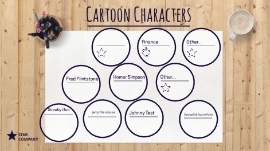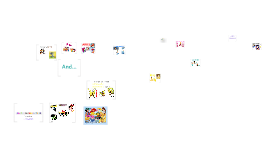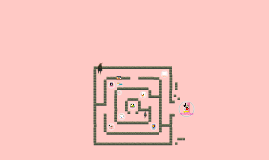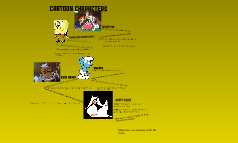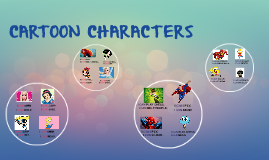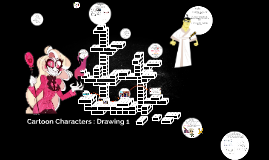Cartoon Characters
Transcript: We will check out several different cartoon styles and typical guidelines for creation. Expression & Body Language Practice DESCRIPTORS/DESIGN FOCAL POINTS!!! Might be...a job, a personality trait, favorite things, fandoms, iconic bits essentially, creating and keeping them 'on brand' Practice *all sizes are listed by the measurement of "heads" 1. Pick from among your selection. 2. Draw it once as an adult, once as a teen, and once as a child. 4. Share and compare and discuss... ADULTS = 5-7 heads tall...superheroes are more like 8. TEENS = 4-6 heads tall. YOUNG CHILDREN / 'Cute' Critters = 2-3 heads tall. 1. Photograph your hand drawn work.. 2. Log in to AD and insert this photo in as a background layer. Lower its opacity to at least 60% or lower. 3. Add a draw layer over it and begin tracing and refining the lines in a light blue color. 4. Add a clean draw layer at 100%. Select your inking tool. Drawn final lines in black. Proportion: The size relationship of parts to the whole. Exaggerate or consistent and more...real...ish? Practice CRITERIA 1.Create an Adobe Draw account. (email and pw) 2. & 3. WRITE DOWN THE LOG IN INFORMATION AND 3. TURN IT IN TO YOUR FRIENDLY NEIGHBORHOOD NELSON. *GUIDED TOUR* 1. Tools and personalizing. 2. Adding layers. 3. OPACITY 4. Save and Sign out. Style Contrast (differences) Style Analysis Most cartoons keep to one or two levels of gradation..and that only for intense moments. Too much detail can be overwhelming and disturbing. Let's sort this out together. STYLE Schematic drawing: PRACTICE Repetition: Figure is repeated with an acceptable level of accuracy. (20pts) Variation: Distinctly different poses and facial expressions. --6 heads in full color. All distinctly different expressions. 3 of each angle (front, 3/4, side) --3 full body poses: Each distinctly different and complementary and in full color. --1 interactive pose/expression with background and in full color. Application: App is fully understood and explored effectively.(20pts) Color use: Efficient and deliberate use of color and cel-shading.(20pts) Studio Time: Proficient and effective use of ALL studio time.(20pts) 3 weeks; including exercise days. How to Design Your Unique Character All cartoon and comic styles begin with the BASICS 1. Bell-Ringers will give us an opportunity to flex some ideas. (practice) 2. Focus on how to visually represent personality traits. (engage) 3. Play with the proportions (revise) 4. Absorb style choices and preferences from past and now. (analyze) 5. Simplify features and details THEN EXAGGERATE EXPRESSION. (revise/appeal) "fine art" styles and techniques typically have many blended gradations of value and focus on subtleties. the personal and unique way in which an artist uses the elements of art; line, shape, color, value, space, form,and texture. a technique of drawing in which complex forms are broken down into recognizable and simple shapes before adding detail. Cel-Shading: "toon shading" is a non-realistic form of adding shadows to cartoons; only shows one to two layers of shadow gradient that hug the outline of the shape. Contour: The outline of a shape/form. -Character Proportion- We focus only on the head. 1. Right now create 15(fifteen) totally, completely different head shapes. remember our form lines. 2. Then play with eye shapes and placements and what that does to expression/personality on 3 of my choosing ; ) 3. Add a mouth. Try first just the line, change angle and placement. Then open it. 4. Now, ears, hair...more... Cartoon Characters : Drawing 1 Variety/variation: differences in subject matter for the sake of interest. enjoy, then observe, then really analyze. Suuuuper common in anime... add logo here






